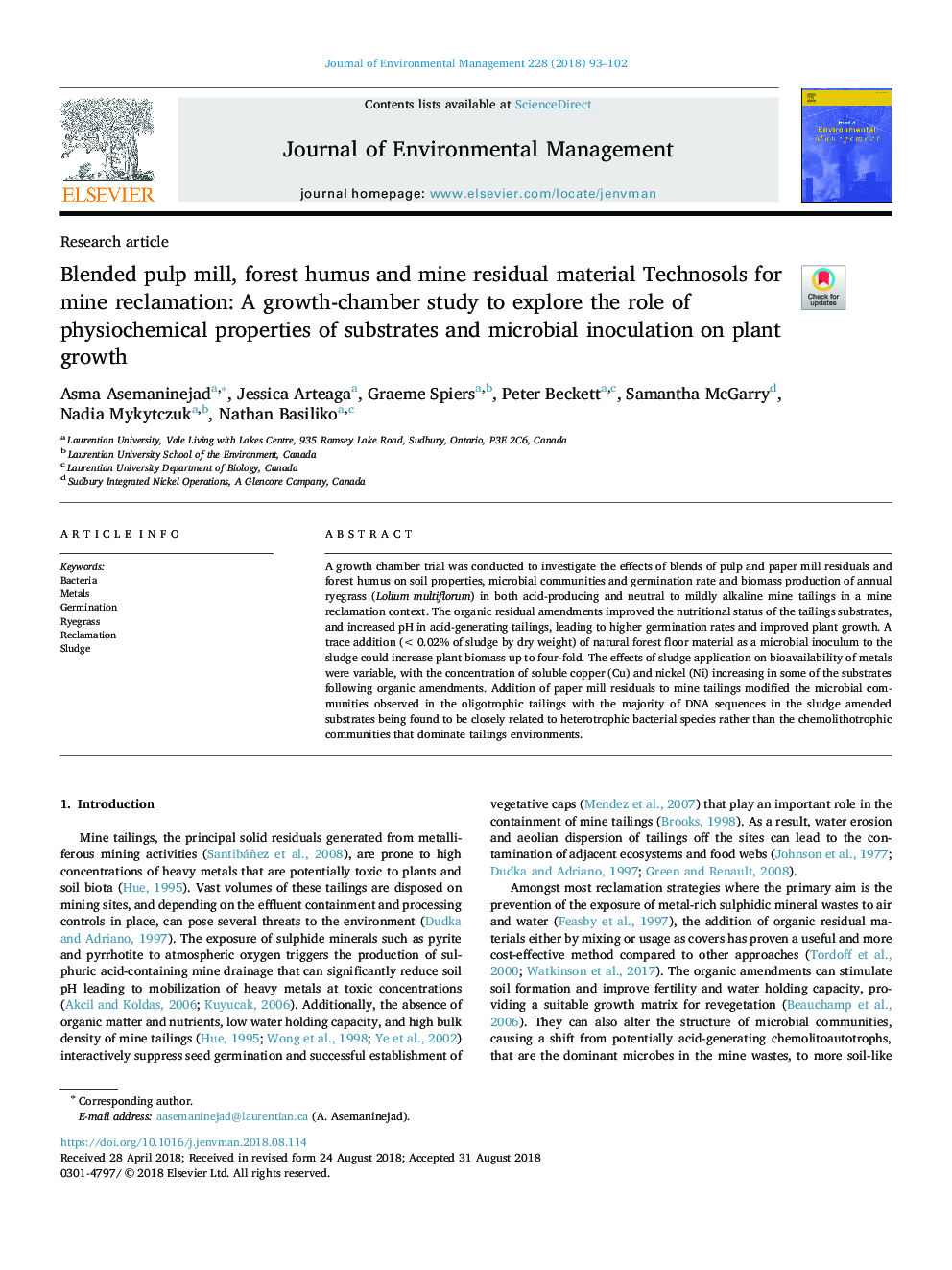| Article ID | Journal | Published Year | Pages | File Type |
|---|---|---|---|---|
| 10149020 | Journal of Environmental Management | 2018 | 10 Pages |
Abstract
A growth chamber trial was conducted to investigate the effects of blends of pulp and paper mill residuals and forest humus on soil properties, microbial communities and germination rate and biomass production of annual ryegrass (Lolium multiflorum) in both acid-producing and neutral to mildly alkaline mine tailings in a mine reclamation context. The organic residual amendments improved the nutritional status of the tailings substrates, and increased pH in acid-generating tailings, leading to higher germination rates and improved plant growth. A trace addition (<0.02% of sludge by dry weight) of natural forest floor material as a microbial inoculum to the sludge could increase plant biomass up to four-fold. The effects of sludge application on bioavailability of metals were variable, with the concentration of soluble copper (Cu) and nickel (Ni) increasing in some of the substrates following organic amendments. Addition of paper mill residuals to mine tailings modified the microbial communities observed in the oligotrophic tailings with the majority of DNA sequences in the sludge amended substrates being found to be closely related to heterotrophic bacterial species rather than the chemolithotrophic communities that dominate tailings environments.
Related Topics
Physical Sciences and Engineering
Energy
Renewable Energy, Sustainability and the Environment
Authors
Asma Asemaninejad, Jessica Arteaga, Graeme Spiers, Peter Beckett, Samantha McGarry, Nadia Mykytczuk, Nathan Basiliko,
